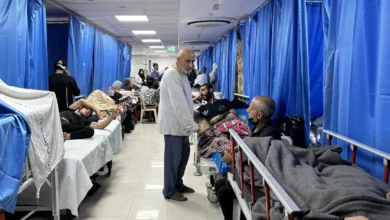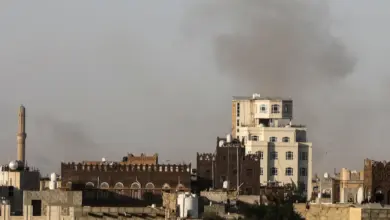
Any premature lifting of restrictions imposed to control the COVID-19 pandemic could lead to a fatal resurgence of the new coronavirus, the World Health Organization warned Friday.
WHO chief Tedros Adhanom Ghebreyesus said that while some states were considering ways to ease the restrictions which have placed around half of humanity under some form of lockdown, doing so too quickly could be dangerous.
“I know that some countries are already planning the transition out of stay-at-home restrictions. WHO wants to see restrictions lifted as much as anyone,” he told a virtual press conference in Geneva.
“At the same time, lifting restrictions too quickly could lead to a deadly resurgence. The way down can be as dangerous as the way up if not managed properly.
“WHO is working with affected countries on strategies for gradually and safely easing restrictions.”
Tedros spelled out six factors that should be considered before restrictions could be safely eased.
He said that transmission would have to be controlled; sufficient public health services made available; outbreak risks in care homes minimized; preventative measures imposed in workplaces and schools; virus importation risks managed; and communities made aware of and engaged in the transition.
– Africa acceleration –
The global death toll has gone over 100,000.
More than 1.6 million infections have been recorded globally, according to an AFP tally, since the virus first emerged in China in December.
Tedros welcomed signs that its spread was slowing in some of the hardest-hit countries in Europe — citing Spain, Italy, Germany and France.
But he also warned of an “alarming acceleration” of the virus elsewhere, highlighting Africa, where he said it was beginning to emerge in rural areas.
“We are now seeing clusters of cases and community spread in more than 16 countries” on the continent, the former Ethiopian health minister said.
“We anticipate severe hardship for already overstretched health systems, particularly in rural areas, which normally lack the resources of those in cities.”
Tedros said that even the countries with the world’s strongest health systems had been caught by surprise by COVID-19. He urged them to reinforce their healthcare provision rather than plunge into a “cycle of panic and neglect”.
In many countries, “we’re now in a phase of panic because there is this dangerous, invisible virus which is wreaking havoc,” he said.
“But that should actually lead into asking questions on what to do to strengthen our system.
“No country is immune.”
– Exit strategy –
The WHO director-general also said he was particularly concerned by the large numbers of cases being recorded among health workers — with more than 10 percent reportedly infected in some nations.
“When health workers are at risk, we’re all at risk,” he said.
Tedros said evidence from some countries, including China, Italy and the United States, showed that health workers were being infected outside healthcare facilities, in their homes and communities.
Switching to the Ebola outbreak in the Democratic Republic of the Congo, he said a new case had been reported, just three days before a deadline that would have marked the official end to the long epidemic.
WHO emergencies director Michael Ryan said some 2,600 alerts were still being investigated every day in the DRC, with thousands of samples taken every week.
“Maybe that’s our lesson for COVID-19: there is no exit strategy until you’re in control of the situation, and you must always be ready to go back again and start again,” he said.
Image: AFP / David GANNON Don’t lift restrictions too soon, the WHO warns




